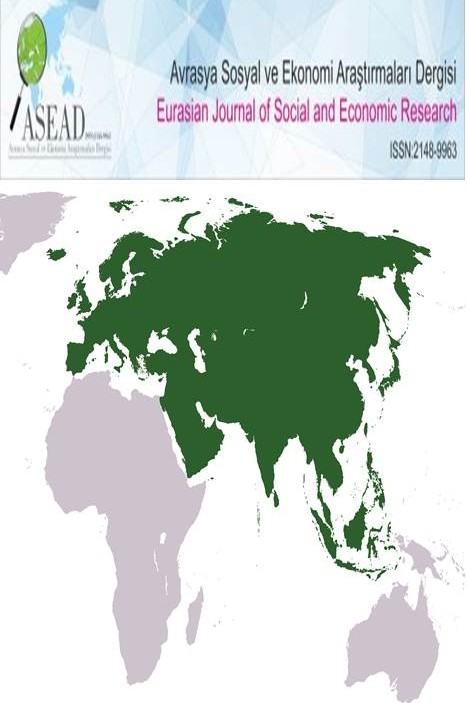THE EFFECTS OF POST-M&A CULTURAL CHANGE IN ORGANIZATIONS ON INDIVIDUAL AND ORGANIZATIONAL PERFORMANCE
Mergers&Acquisitions, Individual Performance, Organizational Performance, Organizational Culture, Organizational Behavior, Personality
___
- ADDANTE, F. (2012). Start-up step 1: A culture plan. INC.Mansueto Ventures LLC BARNEY, J.B. (1996). Organizational culture: Can it be a source of sustained competitive advantage? The Academy of Management Review, 11(3), 656-665. DENISON, D., MISHRA. A.K. (1995). Toward a theory of organizational culture and effectiveness. Organizational Sciences, 6(2), 204-223. DENISON, D., & NEALE, W. (1996). Denison Organizational Culture Survey. Ann Arbor, MI. DIGEORGIO, R.M. (2003). Making mergers and acquisitions work: What we know and don't know- Part II. Journal of Change Management, 3(3), 259-274. FIELD, J., & PECK, E. (2003). Public-private partnerships in healthcare: the managers' perspective. Health & Social Care in the Community,11(6),494-501. Hay Group Report. (2007). Dangerous Liasons-Mergers and Acquisitions: The Integration Game. Executive Summary. KAPLAN, R. S., & NORTON, D. P. (2004). Measuring the strategic readiness of intangible assets. Harvard Business Review, 82(2), 52-63 LAJOUX, A.R. (1998). The art of M&A integration: A guide to merging resources, processes, & responsibilities. New York: McGraw-Hill. MILLER, R. (2000). How culture affects mergers and acquisitions. Industry Magazines. MITLETON-KELLY, E. (2006). Coevolutionary integration: The co-creation of a new organizational form following a merger and acquisition. Complexity and Organization, 8(2), 36-47. SATHE, V. (1985). How to decipher and change corporate culture. In R. H. Kilmann, M. J. Saxton, R. Serpa, & Associates (Eds.), Gaining control of the corporate culture (pp. 230-261). San Francisco, CA: Jossey-Bass. SCHEIN, E.H. (1983). The role of the founder in creating organizational culture. Organizational Dynamics, 12,13–28. SORENSEN, J. (2002). The strength of corporate culture and the reliability of firm performance. Administrative Science Quarterly, 47(1), 70-91. TEERIKANGAS, S., & VERY, P. (2006). The Culture-Performance Relationship in M&A: From Yes/No to How. British Journal of Management, 17, 31-48. VERMEULEN, F. (2008). Song of the sirens. Business Strategy Review, 19, Autumn, 22-27. WEBER, R.A., & CAMERER, C.F. (2003). Cultural conflict and merger failure: An experimental approach. Management Science, 49(4), 400-415.
- Yayın Aralığı: Yılda 4 Sayı
- Başlangıç: 2014
- Yayıncı: İrfan TÜRKOĞLU
Serdar Egemen NADASBAŞ NADASBAŞ
MODERNLEŞME SÜRECİNDE TÜRKİYE VE MOZAMBİK: İKTİDAR, KÜLTÜR VE KALKINMA SORUNU (1890-2015)
PSİKODİNAMİK AÇIDAN ÂSAF HÂLET ÇELEBİ’NİN ŞİİRLERİ
POSTMODERNİZM KADAR AŞIRI GÜRÜLTÜLÜ VE POSTMODERNİZME İNANILMAZ YAKIN
DİJİTAL OYUNLARIN BELGESEL NİTELİĞİ ÜZERİNE BİR DEĞERLENDİRME
Ömer Faruk AKBOĞA, Uğur GÜRGAN
EDEBİYAT-TARİH İLİŞKİSİ BAĞLAMINDA BULGAKOV’UN “BEYAZ MUHAFIZ” ADLI ESERİNDE KURMACA GERÇEKLİK
KAYYIM SİSTEMİNİN DEMOKRATİK YÖNETİM İLKELERİ VE YASAL AÇIDAN DEĞERLENDİRİLMESİ
